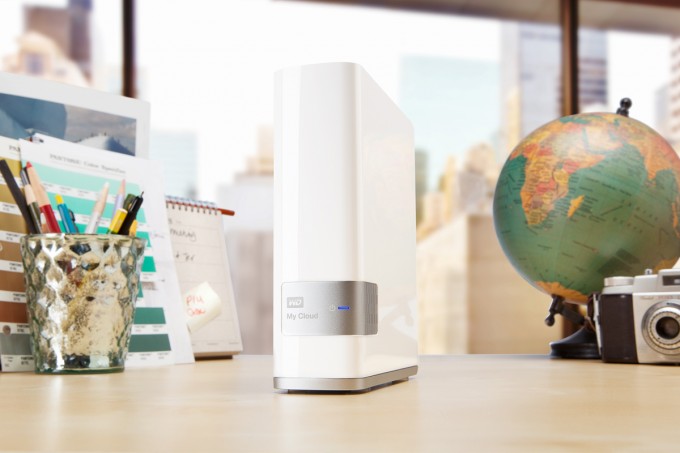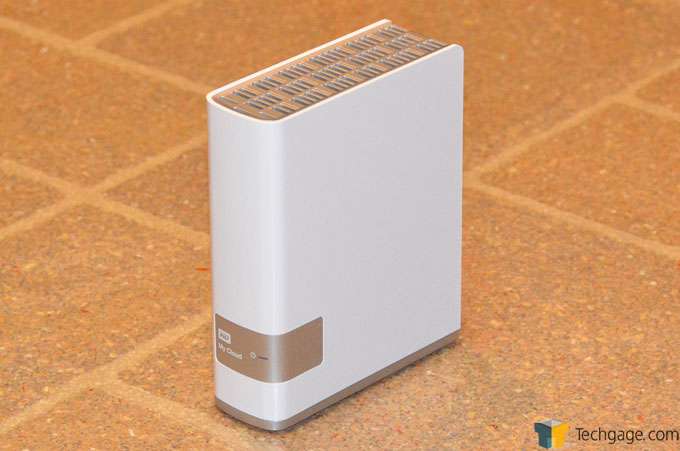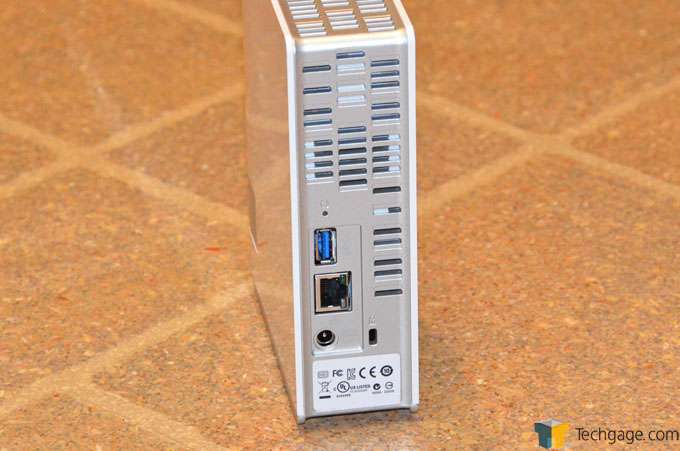- Qualcomm Launches Snapdragon 4 Gen 2 Mobile Platform
- AMD Launches Ryzen PRO 7000 Series Mobile & Desktop Platform
- Intel Launches Sleek Single-Slot Arc Pro A60 Workstation Graphics Card
- NVIDIA Announces Latest Ada Lovelace Additions: GeForce RTX 4060 Ti & RTX 4060
- Maxon Redshift With AMD Radeon GPU Rendering Support Now Available
Do-It-Yourself Cloud Storage: WD My Cloud 2TB Review
WD poses this question: Why store your sensitive data online, when the storage space is limited, and the security out of your control? Its answer: WD My Cloud, a NAS-like device that enables you to create a personal cloud in your home, quickly and easily. Say hello to huge storage (2~4TB) and no recurring subscription fees.
Page 1 – Introduction
We humans, are creatures of pattern. Of repetition. Most of us follow the same routine day in and day out, deviating a little when time or money allows. I know in my own life, most days I wake up, go to work and come home. While not unlike most everybody else with careers, my life can become monotonous at times. I am a creature of pattern.
Take, for example, my writing at Techgage over the past couple of years, which has centered on storage. I am a big proponent of backing up your data; I back my personal data up on a pair of NAS boxes, one I purchased and the other, one I held onto after a review. I backup and share data on one, and back that up to the other. However, even without the redundancy of a second device, backing up one’s data to a single drive is far better than nothing at all.
For years, it was easy enough to plug in a USB drive, copy all of the files I wanted to back up to it, and then set it back on the shelf. After a while I created a couple of batch scripts that I scheduled to kick off every 12 hours. Through this, I was ensuring that if my machine ever crashed, I would be, at the worst, 12 hours back on daily data changes. As drive capacities increased and streaming options grew, it made sense to look into acquiring a NAS box as creating shares within Windows can be prickly at times. Beyond that, it would require that my machine be powered on 24/7. With mid to upper end hardware, this can add up come time for the electric bill. A NAS made sense as well, due to the growing number of networked machines on my home network. Phones, laptops, desktops, streamers… it was all made simpler when there was a single centralized location for files that I wanted to share across multiple devices.
All that being said, there are already products that allow the sharing of data beyond your personal firewall. Where I used to email myself files, as long as they were under 5-10MB in size, I now use Dropbox and Google Drive. Even then, I have been limited to roughly 4GB of storage without having to pay an additional monthly fee. To be fair, I pay under three dollars a month for 35GB of space with Google, which isn’t expensive, but it’s still a recurring cost that I sort of have to account for.
When we were approached by WD about a new cloud-focused product, we were interested. Long known for its reliable hard drives, the company has expanded out to external storage as including its own drives in enclosures just made sense. It seemed only a matter of time until the company embraced the trends of shared storage and jumped upon the “Cloud”. This brings us to the WD My Cloud.
Built within an enclosure that looks very similar to a My Book, the My Cloud we have for evaluation is a 2TB unit. Standing only 6 ¾” the My Cloud should fit on most desks or shelves without issue. With only a small LED on the front of the unit, and ventilation slits all along the top, back and bottom, it’s a rather unassuming little drive.
Around to the back of the unit, we see the one external feature that differentiates it from the My Book line of external hard drives, a gigabit network port. Above it is a single USB 3.0 port and below, a power port and Kensington lock. That’s it. There really isn’t anything more to the My Cloud as a device. The magic sits within the software.
Rounding out the hardware, the WD My Cloud ships with an Ethernet cable and external power supply.
For those that like to know, here is the WD spec sheet for the My Cloud.
- Dual-Core Processor
- Gigabit Ethernet
- USB 3.0 expansion port
- PC/Mac Compatible
- DLNA 1.5 and UPnP verified
- Free Mobile Apps
- Free Desktop File Management App
- Web-Based Setup UI
- Control Dashboard
- iTunes Server Support
- Automatic Device Discovery
- 128-bit EAS Encryption for Cloud
On the next page, we’ll dive in with a look at the setup process and the My Cloud’s dashboard.
Support our efforts! With ad revenue at an all-time low for written websites, we're relying more than ever on reader support to help us continue putting so much effort into this type of content. You can support us by becoming a Patron, or by using our Amazon shopping affiliate links listed through our articles. Thanks for your support!







